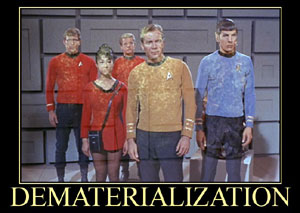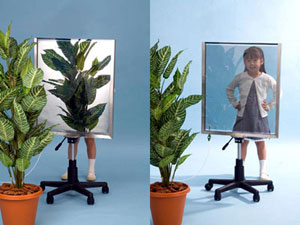|
|
 
|

In J.K. Rowling’s Harry Potter novels, the sport of Quidditch involves putting an object through the vertical plane of a set of three hoops at each end of the field of play. Lacking access to flying broomsticks, teams competing in this event will use electromagnetic force to cause a loop of wire to spin.
The goal of this competition is to construct a device that spins via electromagnetic forces and is capable of lifting a small paperclip a vertical distance of 20-cm. Each team that registers by the deadline will receive a kit containing everything required to construct the Locomotion Coil.
Each Locomotion Coil kit contains
- Provided and Required to be used in final device:
- 1.5-meters of 24-gauge magnet wire
- 2 neodymium magnets
- (For the device which is used in the competition, no substitutions or additions for the 1.5-meters of 24-gauge magnet wire or the 2 neodymium magnets will be allowed.)
- Also Provided:
- 2 banana clip connecting wires
- 2 jumbo paper clips
- 1 large soda straw
- 1 small square of medium grit sandpaper
- 1 rectangular cuboid of packing foam
- 1 battery holder for D-cell batteries
- 2 D-cell batteries
- 1 small paper clip
- 50-cm long thread or light string
Constructing an Electromagnetic Coil
Wind the magnet wire into a coil. Wrap the ends of the wire around the coil a couple of times on opposite sides to hold the coil together. Leave 2-cm projecting from each side of the coil.
* The diameter of the coil and the number of loops will effect the performance of your device; be sure to experiment to determine the arrangement which optimizes performance.The magnet wire had an insulating coating of red enamel. Use the sandpaper to remove the enamel on one side of one of the projecting ends. It is very important that the orientation of the sanded face of the wires be the same on both sides. For instance, if the coil is held in a vertical plane, sand only the top half of the two ends of the projecting ends of the wire and leave the bottom half red.)
Constructing the Locomotion Coil
Unfold one end of each paper clip and stick them into the packing foam. Rest the ends of the coil in the cradles formed by the paper clips. Adjust the height of the paper clips so that when the coil spins, it clears the magnets.
* The gap between the magnet and the bottom-most edge of the coil will effect the performance of your device.Adjust the coil and the clips until the coil stays balanced and centered while spinning freely on the clips. Good balance is important in getting the motor to operate well.
Place the D-cell batteries in a battery holder. Use the alligator clip leads to connect one terminal of the battery to one paper clip and the other terminal to the other paper clip.
Give the coil a spin to start it turning. If it doesn't keep spinning on its own, check to make sure that the coil assembly is well balanced when spinning, that the enamel has been thoroughly scraped off on, that the projecting end has been painted with black pen as noted, and that the coil and the magnet are close to each other but do not hit each other. You might also try adjusting the distance separating the cradles: This may affect the quality of the contact between the coil and the cradles. Keep making adjustments until the Locomotion Coil works smoothly.
After the joy of watching the Coil spin finally starts to wear off, tie or glue a piece of thread or thin string to one of the projecting ends of the wire. With a small paper clip attached to the other end of the thread, hand the clip over the edge of a table and set your Coil in motion so it reels up the paper clip as it spins.
Event Scoring:
- 1 point -- properly prepared coil, generates a magnetic field
- 1 point -- spins unattended for at least 1-second
- 1 point -- with adjustments, will spin in both directions
- 1 point -- spins unattended for at least 60-seconds
- 1 point -- without any intervention, lifts a paper clip a vertical height of at least 20-cm in 60-seconds
- first tie-breaker -- height to which paper clip is raised
- second tie-breaker -- number of paper clips raised
All contestants will ensure that their entry works through the application of physics principles and generally follows the spirit of the competition.
Appendix - What is Going On?
Current flows through your coil and creates an electromagnet. One face of the coil becomes a north pole, the other a south pole. The permanent magnet attracts its opposite pole on the coil and repels its like pole, causing the coil to spin.
The Locomotion Coil operates because the permanent magnets exert forces on the electrical currents flowing through the loop of wire. When the loop of wire is in a vertical plane, the forces on the top and bottom wires of the loop will be in opposite directions. These oppositely directed forces produce a twisting force, or torque, on the loop of wire that will make it turn. Suppose that the permanent magnets are mounted with their north poles facing upward. The north pole of the permanent magnet will repel the north pole of the loop electromagnet and attract the south pole. But once the south pole of the loop electromagnet was next to the north pole of the permanent magnet, it would stay there. Any push on the loop would merely set it rocking about this equilibrium position.
The key to your Locomotion Coil is sanding the insulating red enamel from the same half of each projecting wire. When the unsanded side of the projecting wire is in contact with the paper clip's cradle, current is not able to flow and the magnetic field of the electromagnet coil is turned off for that half of each rotation. The inertia of the rotating coil carries it through half of a rotation, past the insulating enamel. When the electric current starts to flow again, the torque acts in the same direction as before. The coil continues to spin in the same direction.
In your Locomotion Coil, electrical contact between the ends of the electromagnetic coil and the paper clips turns off the current for half of each rotation. Such sliding contacts are known as commutators. Most direct current electric motors use more complicated commutators that reverse the direction of current flow through the coil every half-cycle.
Related Websites: http://scitoys.com/scitoys/scitoys/electro/electro.html, http://micro.magnet.fsu.edu/electromag/electricity/generators/.
Event 3: Transfiguration - Communication / Calculation Challenge
|
Students will use teamwork, communication and calculation skills to transform a three-dimensional object into a second shape as specified by the judges. Two members of the team will observe one object and must devise a step-by-step strategy to transform it into the desired shape. The remaining two team members will be presented with the created set of instructions and will be required to use the provided parts to construct the desired object with no additional communication. |

|
Event 4: Impromptu Team Physics Activity
Activity is the key word for this competition, with the goal being for each team to achieve the desired result as quickly as possible. The situation is designed to reward teamwork and common sense thinking as well as knowledge of physics and the ability to work with formulae. Every team will come away with smiles and good memories regardless of how well they master the particular challenge.
Event 5: Order-of-Magnitude Quiz (also known as Fermi Questions)
Arrive at a reasonable approximation for the value of a complex situation with very little to no information available to directly compute the answer. In this quiz, the contestants will need to quickly make assumptions for values to use in simple calculations in order to arrive at the "correct" answer, stated as the power of ten of the number that fits the accepted value.
Teams will receive 7 questions to complete within 15 minutes. The teams can divide the work in any way they see fit, but only one answer per question per team will be accepted.
Answers will be judged according to how many orders of magnitude the team's answer is from the judge's solution. The lowest score wins -- 0 points awarded for the answer accepted by the panel of judges, with 1 point scored per order of magnitude from the accepted value.
Examples of Order-of-Magnitude Quiz questions include:
- How many electrons enter the starter motor when a new, full-sized pickup starts?
- How many times would a tire of a Ford Taurus rotate when driven from NYC to LA?
- Estimate the number of gallons of gasoline used annually by all the cars in the USA.





